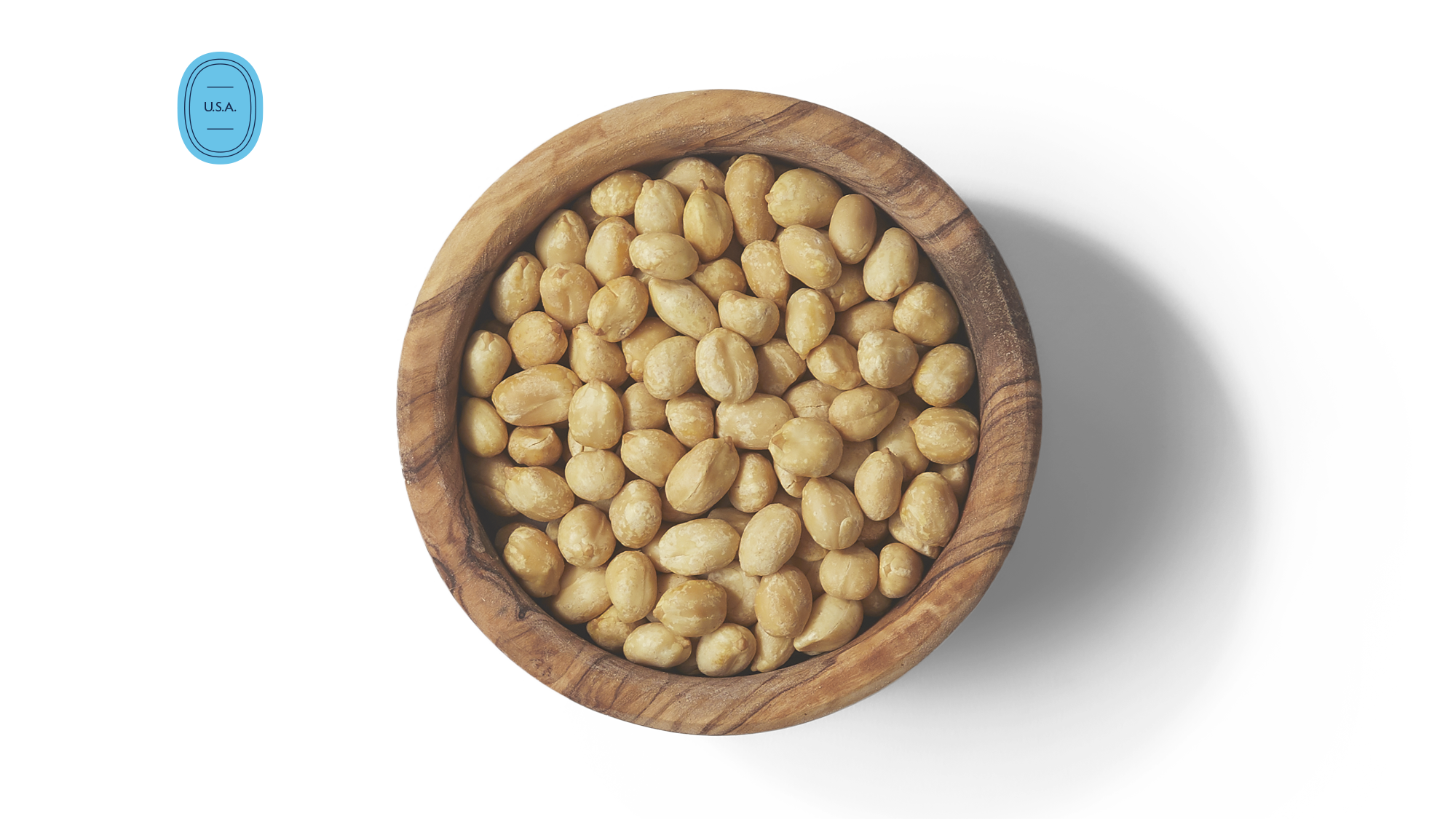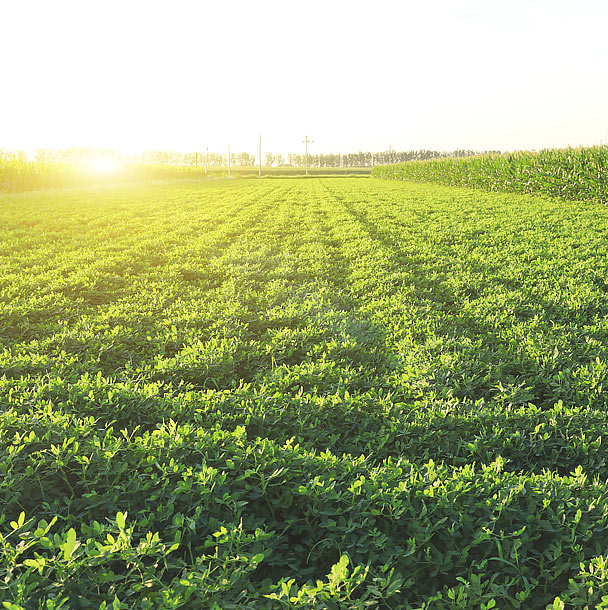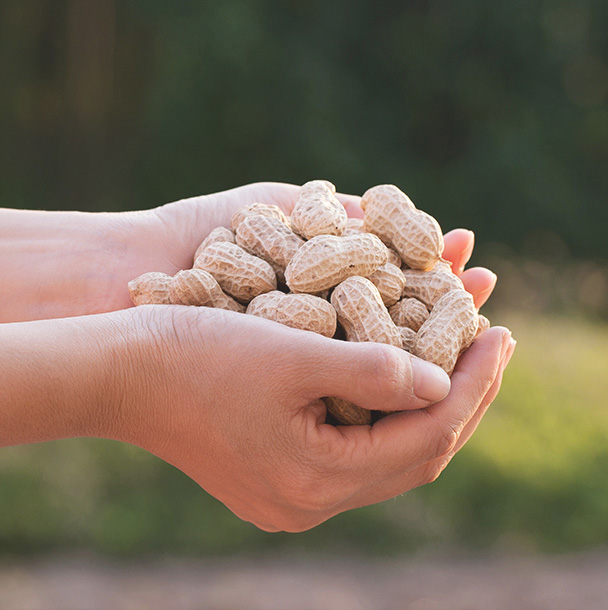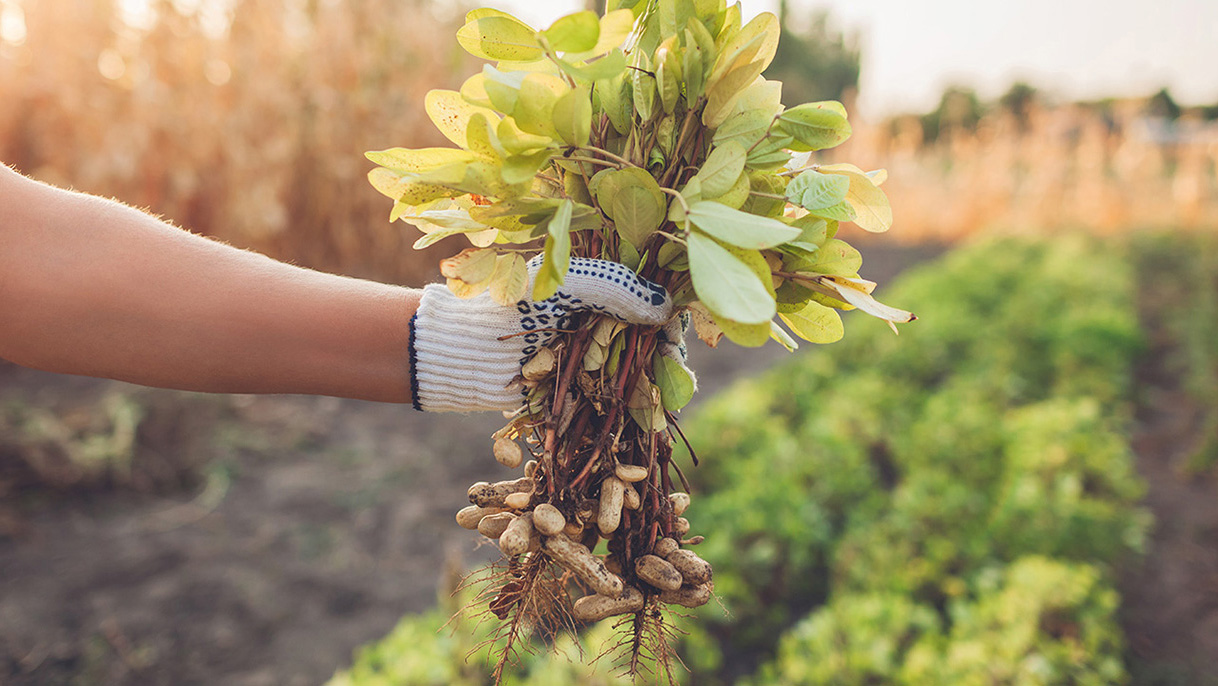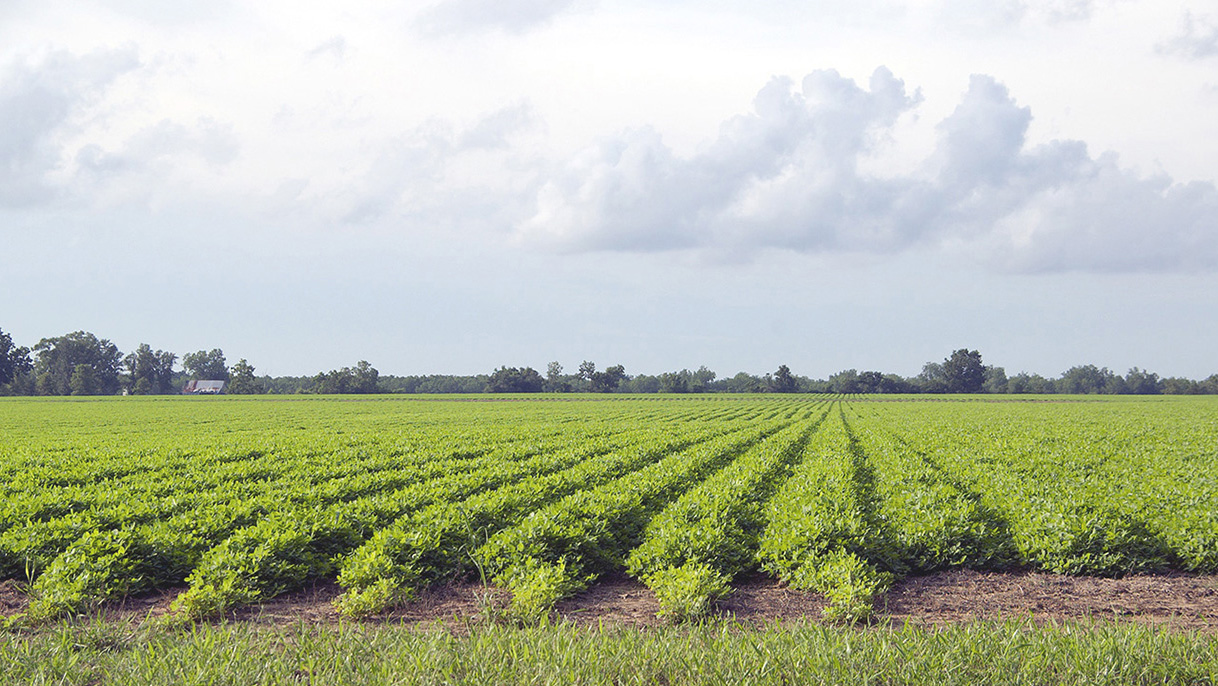Place of Origin
The United States is the 4th largest peanut producer in the world, producing over 3 billion pounds of peanuts annually on approximately 1.5 million acres of farmland located in the mid-south and southeastern states. The U.S. peanut industry plays a vital role in our economy as the seventh most-valuable crop with a farm value of more than $1 billion.
Four types of peanuts are grown in the U.S.
● Runners – most commonly grown peanut, medium in size with excellent roasting characteristics, representing roughly 75-80% of the crop
● Virginia – roughly 10% of the U.S. crop and larger in size, Virginia peanuts are primarily used for in-shell applications, but also marketed as cocktail peanuts
● Spanish – smaller kernels and tend to be “nuttier” in flavor when roasted
● Valencia – sweet type of peanut covered by a bright red skin; often sold in shell or boiled
